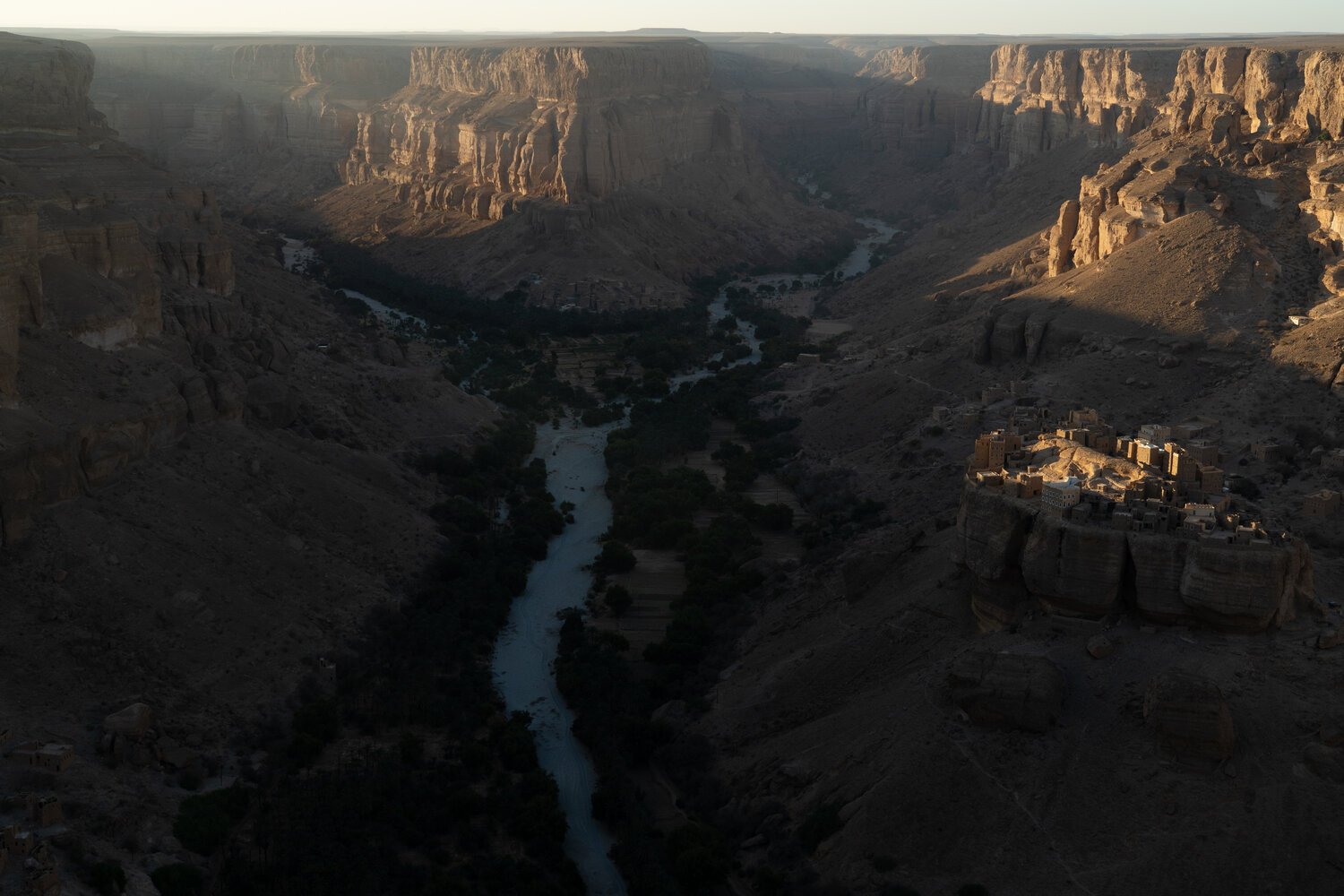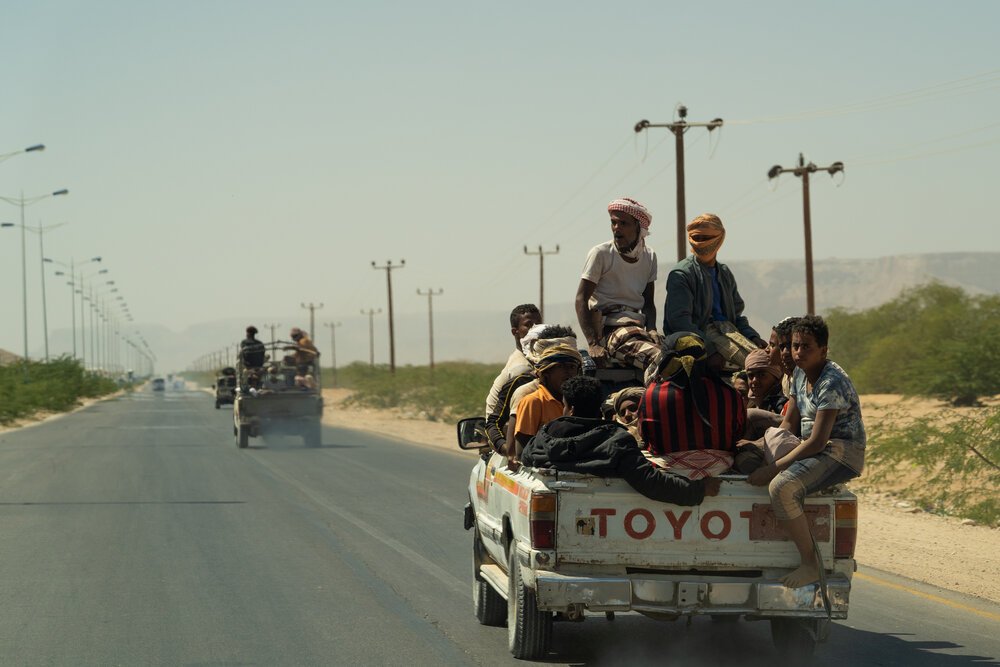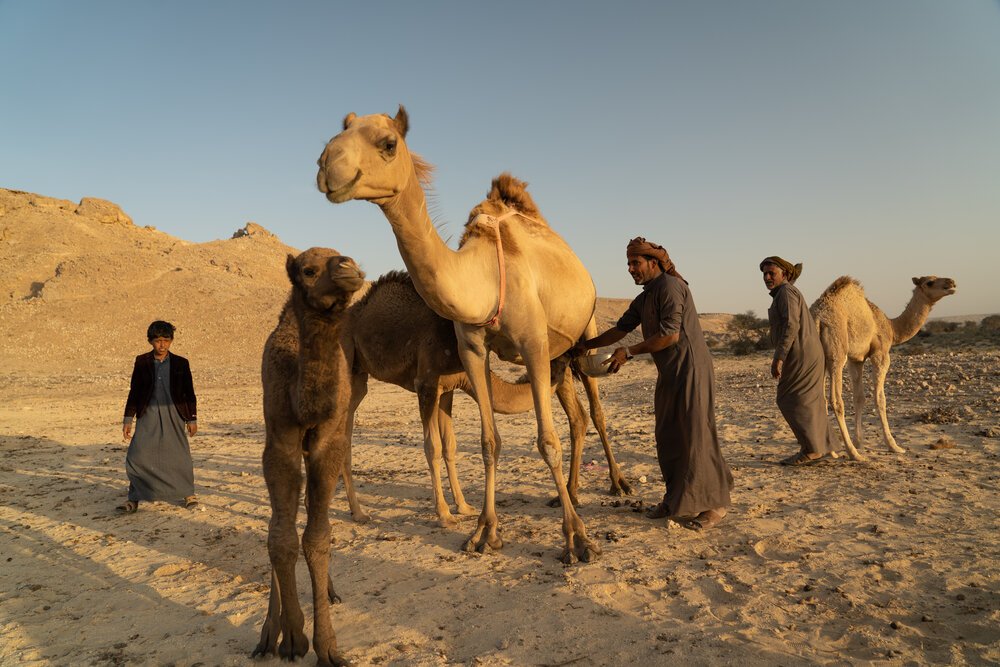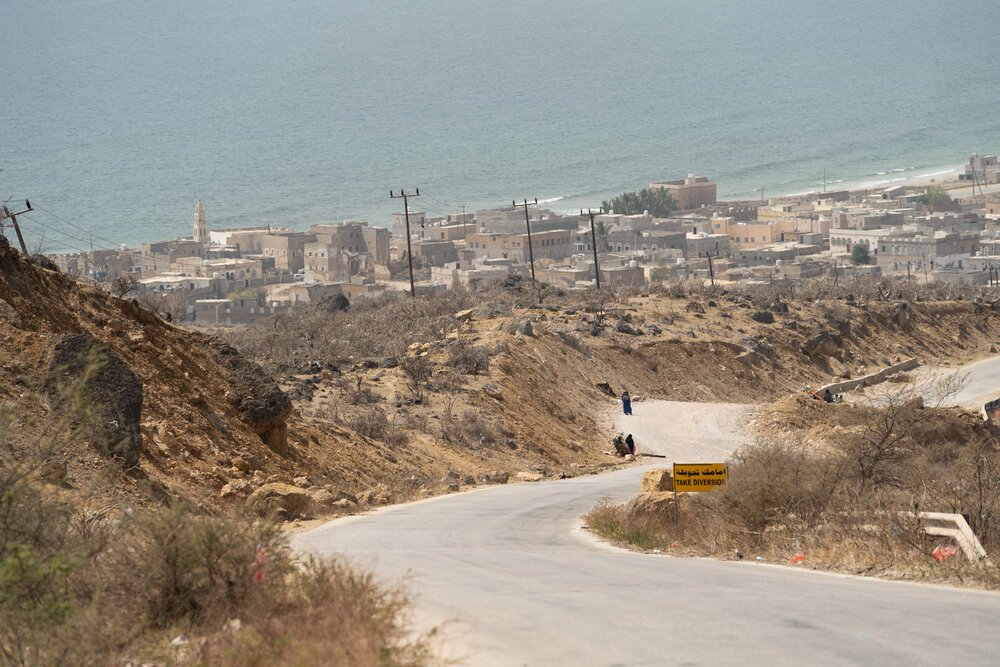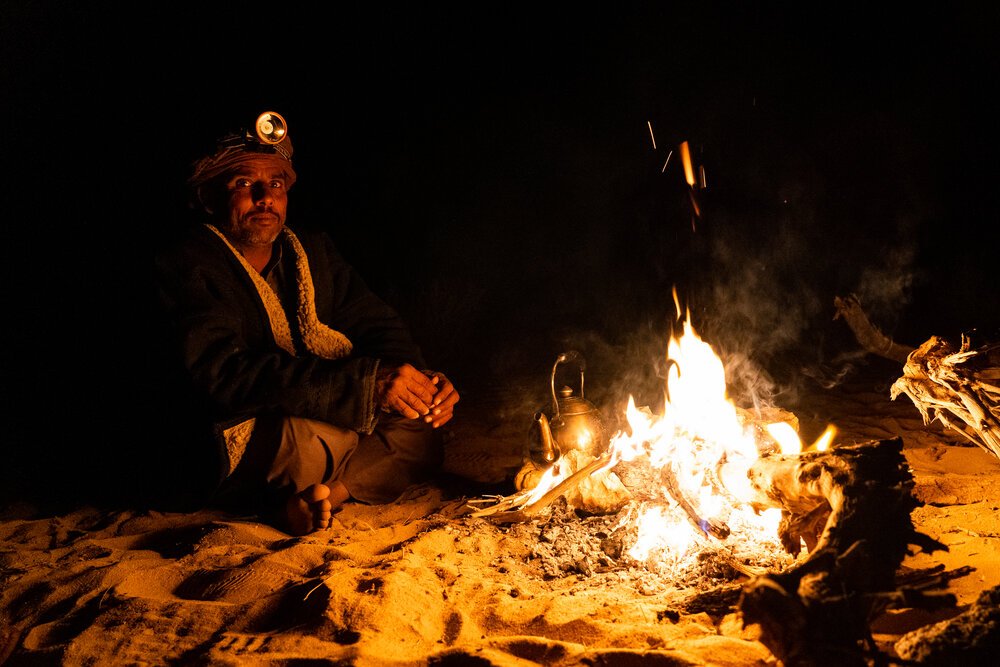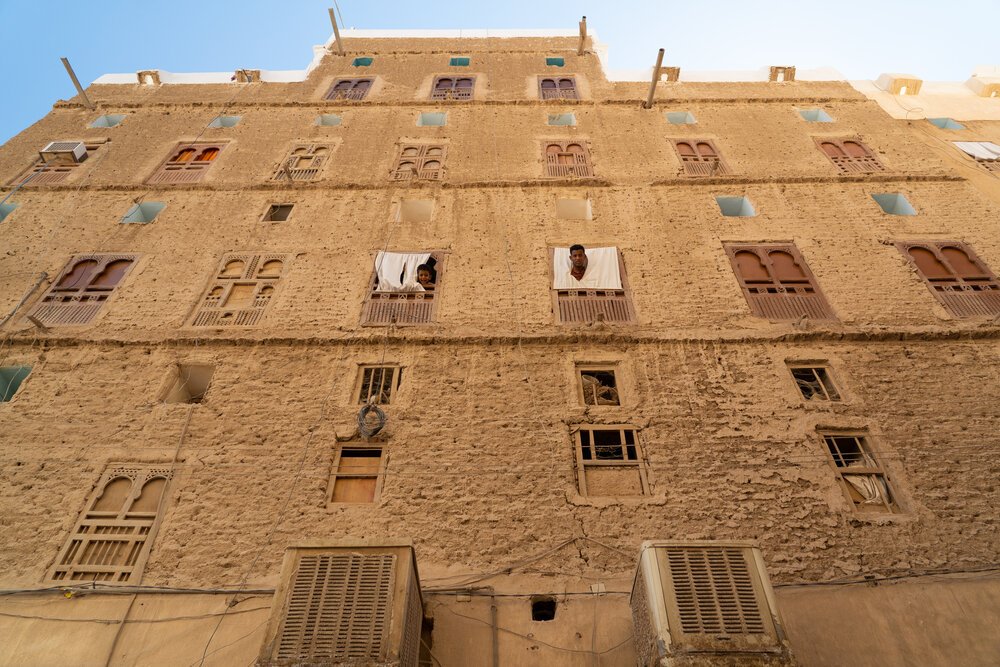The Inertia Guide to South Yemen
Sunrise over the tiny village of Haid Al Jazil in Wadi Dawan, Yemen.
THE INERTIA GUIDE TO:
SOUTHERN YEMEN
Table of Contents
OVERVIEW OF SOUTH YEMEN
Unless you’ve been living under a rock for the past few years, it’s no secret Yemen has been engaged in a multi-party civil (or regional, depending on how you want to see it) war. This has certainly had an adverse effect on tourism in Yemen, to say the least, as if the country did not have enough problems with AQAP attacks against tourists in 2007 and 2011. So is it crazy to travel to Yemen now?
Well, that is a complex question to answer. Some parts of the country remain off-limits, due to either militia groups, terrorist groups or some combination of the two. That being said, since the war broke out in 2015 things are finally starting to calm down in many parts of southern Yemen, enough so that for the past year guided and pre-approved travel has been possible.
I’ve been fortunate enough to travel to Yemen three times within the last twelve months and here’s my insider guide to what’s currently possible in South Yemen and how you can get there (and get out) safely.
South Yemen generally refers to the former borders of the People’s Democratic Republic of Yemen. To me, I don’t fully understand how this is “south,” as it looks a lot more like eastern Yemen on a map, but in Yemeni terms, it means “south”.
Yemen is a diverse country with many tribes, sects and cultures, and this “southern” region is in and of itself unique. The majority of the people here are Sunnis (but many northerners who are Zaidi have fled to the south) and many from South Arabian ethnic groups like the Mahri and Hadhrami. Yemeni Arabic is the lingua franca, but it’s not uncommon to still hear Mehri spoken in rural parts of Al Mahrah and Socotri is spoken regularly in the archipelago of Socotra.
Crossing the Oman-Yemen border at Sarfait. This photo depicts the last check on the Omani side before entering Yemen.
GETTING IN AND OUT
LAND BORDERS
Currently, it is only possible to travel into southern Yemen via the border with Oman. Two highway border crossings are open, one on the southern coastal road called Sarfait, and the other in the Empty Quarter desert between the Yemeni village of Shehn and the Omani town of Al Mazyunah.
The former border is generally used as an entry and exit point, whereas the desert crossing may only be used reliably as an exit crossing from Yemen to Oman (it is not possible to enter Yemen from the Shehn crossing, but it’s easy to exit Yemen there).
The Yemen-Oman border regions-- Al Mahrah and Dhofar-- are culturally and geographically very similar. The people are South Arabian, many of whom still speak Mehri and Dhofari, the land is dry yet receive a Khareef (in August and September) of rain and greenery that follows, and are defined by sandy coastlines, good fishing resources, rocky mountains and vast deserts the further north you get.
The border crossing at Surfait is not particularly fussy, provided you have the correct paperwork in hand and your Yemeni guide is with you. From Salalah, the drive takes about two hours to the border on a well maintained, paved winding mountain road.
Travelling unescorted in Yemen is not recommended and may not even be possible, as there are numerous military checkpoints and multi-national interests in this part of Yemen, many of which will meticulously investigate and promptly deport an unaccompanied foreigner.
Yemeni visas are issued on the border (for a $100 stamping fee), provided you’ve already received an approval letter from the Ministry of Tourism. Your local agent (I’ll discuss options below) can get this for you with a scan of your passport a couple of weeks in advance.
To leave Yemen, you essentially have a few options-- exit back in Surfait to Oman, exit from the desert highway in Shehn to Oman, or take one of the 5 weekly flights from Seiyun Airport to Cairo, Egypt.
FLIGHTS
As Seiyun is largely controlled by the Saudi military, there are restrictions with flying into Seiyun-- meaning it’s not possible as far as I understand to fly from Cairo to Seiyun and actually exit the airport in Seiyun (you can continue onto Socotra on Wednesdays from Cairo though). However, it is not a problem to fly out of Yemen from Seiyun (to either Cairo or Socotra Island).
Flights may be purchased directly from any Yemenia ticket-issuing office in advance in cash (Cairo and Kuwait City are easiest) but in order for your seat to actually be issued, you’ll need to supply the Yemenia office or your agent with a copy of your passport and your Yemeni visa in advance of your travel date (ideally two weeks in advance). Inertia members can do this easily though their membership documents with our Egyptian agent.
Another option altogether is to fly from Cairo to Socotra Island. Yemenia flight IY607 departs from Cairo Terminal 1 at 02:00am on Wednesday, arriving in Socotra around 11am with a passenger change stop in Seiyun. The return flight departs Socotra at 11:30am, makes a brief passenger change stop in Seiyun again, and continues back to Cairo, arriving around 4:45pm.
Socotra also has its own immigration department and they issue their own visas (needed before arrival, issued on an external document). This is a good option if you’d like to visit Socotra, but skip out on Mainland Yemen, if you’re interested in learning more about Socotra, see the Inertia Travel Guide to Socotra for detailed information.
Traffic on the main highway between Al Ghaydah and Al Mukalla
STAYING SAFE
LOCAL FIXERS
First off, having an experienced, trustworthy and well-connected local fixing team is essential for travel in Mainland Yemen these days. These are the people who will be responsible for your safety and security, accommodation, transport, permits, paperwork, and visa and they are your first line of defence in the country.
If things go to hell these are the guys who you are going to rely on to help you and protect you-- don’t expect a foreign government to send some rescue squad to bust you out of a tricky situation in Yemen. And don’t count on your insurance and rescue companies-- being in a country with a pretty strong travel warning negates most of your coverage and even if it doesn’t, you can expect significant delays. Remember, even if your policy is valid, insurance is about financial reimbursement, not actually rescuing you should something happen.
I don’t have anything but positive things to say about my fixing team in Yemen. Kais Al-Qalisi is a true professional and beyond that, he has treated me like family. I feel safe, engaged and well cared for, and Kais is a pleasure to talk with, explore his country with and learn from. He’s worked in tourism, filmmaking and journalism for the past eighteen years, so his network and experience are unmatched.
I also want to warn people about another agent named Abdulhameed from a company called Easy Yemen. I have met now four people who have travelled with his company and have extremely negative experiences. He is notorious for creating forged documents, getting people into trouble, lying, passing on clients to others who are untrustworthy, and hiring drivers who physically molest women. I have personally had to help two separate groups of his clients in Yemen get away from him and this is not a country you want to have these kinds of problems in. The reviews are all over the internet.
BLENDING IN
Secondly, wearing local clothing is an important part of keeping a low profile in Yemen. For women, it’s even more important to follow Yemeni dress code. This means black abaya (body-covering loose black robe) and niqab (full face veil with only the eyes visible). Regardless of your personal opinion on the abaya and niqab, this is how women in southern Yemen dress, and if you’re not prepared to follow suit I’d strongly re-think visiting Yemen during this time.
As I was to learn from the women travelling with me, the zipper abayas offer a lot more “options” than the ones with snaps or buttons (zippers mean clothes underneath are kind of optional, since the Abaya is essentially a onesie, but snaps and buttons leave gaping holes and you’ll have to wear a full outfit underneath).
Abayas cost around 10,000 to 20,000 Rial depending on design and quality and niqabs cost around 2,000 to 3,000 or so. You may see several types of niqabs on display in the abaya shops-- some of the extra thin ones or mesh ones do not actually cover your face, rather they are for “indoor use with your husband” only I’ve been told. So, yeah, ladies, if you don’t want to be walking around town wearing these sexy bedroom only niqabs, make sure your face is not visible through the niqab in a mirror in the shop.
For men-- Yemeni men typically wear a fouta, this is a cloth man-skirt. They are not too hard to tie once you get the hang of it from a local and they come in all sorts of colours and patterns. Most are locally made and the designs are pretty cool.
I’ve been using mine as a light blanket these days, but it was easy enough to get around in it throughout Yemen. Additionally, many men will also wear a kind of headscarf as well and locals can teach you how to tie it. Foutas tend to cost between 9,000 and 15,000 Rial, while male head scarves cost between 2,000 and 4,000 Rial.
Mahri bedouins milk camels on the southern fringes of the Empty Quarter Desert.
AL MAHRAH
Al Mahrah is Yemen’s easternmost governorate (like a province), bordering Oman and Saudi Arabia. Historically and culturally, Al Mahrah has more in common with the Archipelago of Socotra and Oman’s Dhofar region than the rest of Yemen. Before joining the Protectorate of South Arabia (which later became part of South Yemen along with the Federation of South Arabia), Al Mahrah had its own semi-independent sultanate that also included Socotra.
Al Mahrah is one of the safest regions of Mainland Yemen to visit these days, as it is under stable control by the Hady Government, and has a significant UAE and Saudi military presence. Forgetting politics for a sec, the result has been a greatly improved security situation.
The fishing village of Hawf, Yemen.
COASTAL MAHRAH
From the Omani border at Surfait, the first town you enter in Yemen is Hawf, a small fishing village with white sand beaches, its fair share of plastic litter, and a few currency exchange offices and local provision shops.
It’s not a bad idea to exchange some cash here, or in the main city of Al Mahrah, Al Ghaydah, as having local currency is needed for most transactions. At the time of writing (March 2020) the Yemeni Rial was trading at about 660 per USD at these exchange shops, plus or minus around 10 Rial. Like many developing countries, the currency exchange guys will only take perfectly clean, unmarked, new US Dollar notes and they prefer larger denominations (50s and 100s).
From Hawf, the drive continues along the stunning Arabian Sea coastline towards the dusty city of Al Ghaydah. Local fishermen can be seen going about their daily life and it’s an easy two-hour drive to the city.
Al Ghaydah itself has most of the feels of a border city-- lots of wholesale shops, a bustling souq (market), litter-filled streets, half-finished buildings and plenty of traffic. Many people arrived here from other parts of Yemen during the war and lots have decided to stay. Being a border town, there is a degree of prosperity in Al Ghaydah, but overall it’s a pretty unattractive city. The central souq is definitely worth a wander, especially when all the shops come alive after dark.
Al Ghaydah is also a great place to purchase local clothing-- I strongly recommend dressing local-- it’s both appreciated and will keep you safer by drawing less attention, especially for women.
Dressing local will also help get you through roadblocks, as you’ll want to blend in as much as possible in the car to avoid long checks and paperwork reviews. I don’t exactly “blend in” in Yemen-- meaning I cannot really pass as a local-- but on numerous occasions, I was told to put on a turban and take a sip of water as we passed through military roadblocks to avoid our car from being stopped.
This is less because getting stopped would be a problem, and more because sometimes roadblock checks can take a long time (the longest I experienced was about 40 minutes, but I met two American women who were held up for 5 hours by the UAE army at a checkpoint).
There’s not much more to Al Ghaydah to be honest. There’s a good restaurant in town with excellent seafood, but there’s really not much here in terms of places of interest.
The southern Yemeni coast is speckled with diminutive fishing villages, each one is honestly worth exploring, but time and security may be an issue for local guides. I’d definitely recommend getting into some of them and trying to get onto a fishing boat in the early morning or to a fish market. It’s a great way to experience a slice of life here along the Arabian Sea in Al Mahrah.
Camping out in Yemen’s Empty Quarter Desert.
YEMENI EMPTY QUARTER
Al Mahrah is a great place to explore the Yemeni side of the Rub Al Khali-- the Empty Quarter desert. As you travel north in Al Mahrah, the beaches lead to stone mountains, which in turn give way to sand and scrub desert. Here, Mahri bedouins raise their camels and goats in relative isolation.
They still speak to each other in Mehri, an ancient South Arabian language, and live a traditional life with their camels, tribal territories, Bedouin tents, small towns, and goats. With the right connections, it’s possible to really get into this area and explore.
I got to stay with a Mahri Bedouin family on the land for two days near the tri-border between Yemen, Oman and Saudi Arabia. This particular family owns over one hundred camels and they graze them in the scrubby desert on the southern fringes of the Empty Quarter, a stone’s throw away from Oman (at one point we were about 200 metres from the unmarked desert border with Oman). The men milked the camels around sunset and we spent one night camped out under the stars with a bonfire to keep us warm (until that fire went out around 3am and it was freezing out there).
The second night I travelled with them to the town of Haht, where they have a permanent house now. This family only moved into the house around 10 years ago, but before then they just stayed in their camel hair tents in the desert. Now they spend their time split between the house and the desert, as their camels are in the desert and their wives, children and goats are around the town.
The house was divided into men’s areas and women’s areas and they had a bedouin tent pitched in their yard, just like their tent in the desert near their camel pen. We slept in our gender-segregated areas of the house, and while I was not allowed into the women’s section, the girls I was travelling with had a great time with the women that evening.
We bid farewell to the family and then set off along the desert highway to Hadhramaut, passing by a few dusty trucker towns along the way. The coastal road is nicer and goes to Al Mukalla, but slower, whereas the desert road leads directly to Tarim and Seiyun.
Snuset over Shibam at the viewpoint.
HADHRAMAUT
Hadhramaut is the cultural heart and soul of south Arabia. Historically, the Hadhramaut region includes pretty much all of the eastern half of Yemen, much beyond the borders of the Hadhramaut Governorate, which is today Yemen’s largest province.
The people of the region are referred to as Hadhramis, and they mostly live in densely built mud-brick towns within the valleys, centred along traditional watering stations and semi-fertile valley basins. Hadhrami society is still tribal (as is much of Yemen), they have an old Seyyid aristocracy-- meaning people descended from the prophet Muhammed-- and the town of Tarim has the highest density of claimed descendants of the Prophet than any other place in the world.
Hadhramis are by and large strict in their Islamic observance-- the Hadhramaut is considered to be the most religious part of Yemen-- they value education, and their influential diaspora can be found along maritime trading routes as far as the east African coast all the way to India and Indonesia.
Hadhramaut is a fascinating region to explore, but much more so than Al Mahrah, you have to be especially vigilant here. Al Qaeda in the Arabian Peninsula (AQAP) has carried out attacks here against both government forces as well as tourists, and some of the remote parts of the province may still have a small AQAP presence (although at the time of writing, most AQAP have been pushed out into rural areas of Shabwa, Abyan, Baydah and Marib).
The largest town in the Hadhramaut is Al Mukalla, a large port city on the Arabian Sea. When I first travelled to Hadhramaut in October 2019 it was still a bit too dangerous to visit Mukalla, so I drove through the area and continued north into the heart of the province. It is worth noting Al Qaeda held the city for over 9 months back in 2015.
Moving along to the most interesting parts of the Hadhramaut-- the numerous valley towns of Wadi Doan and Wadi Hadhramaut (the namesake of the region). Nestled into the table-top Hadhramaut Mountains, semi-fertile valleys have been carved out by ancient rivers and streams, and the locals made their villages along the bottoms of these narrow valleys using local materials. Besides power lines and satellite dishes, not too much has changed from times past in these fabled valleys.
The town of Hajrain in Wadi Dawan.
WADI DOAN
Wadi Doan is my favourite of the valleys. Stretching tens of kilometres along a mostly evaporated riverbed, Wadi Doan is simply spectacular and it’s easy to spend a couple of days enjoying the region.
The mostly empty Hayd Aljazeel Resort makes a good base for exploring the valley and tributary valleys. The resort itself is perched upon the top of the canyon and has sweeping views over Haid Al Jazil and nearby villages. It’s a beautiful, secluded, safe spot to unwind and soak in the beauty of Wadi Doan.
As we drove down into Wadi Doan from Seiyun, the first jaw-dropping mud town is Hajrain (the villages are all picturesque, but Hajrain is really beautiful). We decided to stop and walk around for a while, seeing as how the sun was low and the light beautifully golden.
While walking around town, I came across a man making mud bricks-- the bricks that nearly all the buildings are constructed with-- and stopped to chat with him for a while. He’s from the village originally but had gone to Sana’a to work as a vegetable seller before the war forced him back, and with few opportunities, he turned to brick making. The work is difficult and hard on the body, but he earns a decent income from doing it-- about 9,000 Yemeni Rials per day to support his family.
Just on the outskirts of the town, we stopped at a Doani honey shop. Hajrain is famous for small-scale high-grade honey production. The honey from Wadi Doan is called Sedr honey and the highest grade retails locally for over $85 USD a kilo, a small fortune.
One nickname for this honey is grooms honey as it is said to possess special nighttime powers useful for a groom on his wedding night. Sedr honey is quite famous throughout the Gulf as being one of the most sought after high-grade honey, and the specialty local honey shops can tell you all about the different kinds of honey and grades.
The next major town down the valley is the friendly town of Sif, the cultural capital of the region. I know a few of the English teachers from the Sif boys and girls schools, so we spent a morning at both schools, visiting classrooms, meeting students, posing for selfies, and talking with their amazing teachers. It was really a heartwarming experience, especially at the girls school, where everyone was so excited and welcoming. I’d really encourage more people to visit Sif and not simply take a photo of the town’s famous “white castle house” during a quick pitstop from the side of the road.
The people in this town, in particular, were so warm and open-minded and I can definitely see myself continuing to visit and support projects in the village. When I travel, I truly value meaningful interactions with local people and our time spent with the teachers and students in Sif was one of the most memorable and touching experiences I’ve had in Yemen.
While most of Wadi Doan and the surrounding valleys should be visited by car for safety, there are two short hikes (three hours each) you can take from nearby the Hayd Aljazeel Resort down into the valley, one to Haid Al Jazil village and the other to the town of Hufa. Hufa itself is a fascinating town to visit, with mixed architecture and impressive mud buildings built snugly against the sandstone cliffs of the valley.
One stop on most trips into Wadi Doan is the Buqshan Palace-- built by a local aristocratic family who now lives in Saudi Arabia, it’s a massive home that was at one point converted into a hotel, and is now more like a museum. Visiting allows you to experience a bit of Hadhrami architecture, paintings, colours, and a slice of aristocratic life in this unique region. The family owns a second palace just behind this one that’s visible from the rooftop.
As you drive through the valley, you may notice some of the towns have massive palaces and well-maintained buildings next to abandoned ones. This is largely because the Hadhrami diaspora is known for being economically successful-- one of the most famous Hadhrami overseas families is the Bin Laden family, who hail from the Wadi Doan town of Al Rubat.
I tried to reach their ancestral village but was stopped one village away. The General in charge of Wadi Doan was not in favour of me visiting Al Rubat since he said my safety could not be guaranteed there, and he was fearful some Al Qaeda sympathizers may be poking around there looking for people who visit the Bin Laden house. While likely still fine, I decided not to push it and turned back towards Al Quyara and Budah, some of the larger and less frequently visited towns near the southern fringe of Wadi Doan.
As Wadi Doan is still not completely safe to travel at night, we’d return to the hotel just before sunset to enjoy dinner and some relaxation together overlooking the valley below. Haid Al Jazil is a nice break and stress reliever to gather your thoughts, do some reflection, journaling, meditation or yoga, whatever you please. It’s a beautiful property with its own little museum of artifacts, and wonderful picnic areas overlooking the valley (not to mention a pool). There’s a good chance you’ll have the entire hotel to yourself.
Curious locals look at the tourists in the ancient town of Shibam.
WADI HADHRAMAUT
Continuing north from Wadi Doan, you intersect Wadi Hadhramaut-- the biggest of the valleys-- running mostly east-west.
Wadi Hadhramaut is home to the UNESCO World Heritage village of Shibam, in addition to the Sufi religious study centres of Tarim and Einat, and of course Seiyun, the largest city in the region and home to Seiyun International Airport (one of the few airports still functioning in Yemen).
If you drive in from Al Mukalla (coastal road), you’ll first come to Shibam on the western side of the valley, but if you take the desert road, you’ll hit Einat and Tarim first (about an 8 hour drive from the desert frontier town of Shehn).
On my second trip, I took the desert highway, so my first stop was Einat and Tarim. Einat is known really for its Sufi shrines and cemetery, while Tarim is famous as both a pilgrimage town and centre for Sufi religious learning around the Islamic world. Einat is worth a quick stop to check out the cemetery, while Tarim is worth a good half-day to explore, and if you’re lucky you may catch a Sufi music and dancing ceremony (best chances are on Thursdays and Fridays, but they are also seasonal).
Tarim is home to Dar Al Mustafa, a religious academy that attracts scholars and students from around the Islamic world, so it’s not uncommon to bump into Malaysians and Indonesians studying at the academy there. I also met a teacher who invited me to visit, but I ran out of time in the city so I had to turn him down.
The Al Muhdhar Mosque in tarim’s old town is striking, with a massive white mud-brick minaret, and while non-Muslims are not allowed to enter the actual mosque, you can see it from the outside. The small, yet bustling souq is definitely worth wandering around, and it’s located right in the old town. Tarim is best enjoyed on foot, as the town is peaceful, conservative and pleasant to walk around and observe daily life.
Continuing west from Tarim through the valley, you’ll arrive in Seiyun-- the main commercial hub of the Hadhramaut Valley. Seiyun is currently the home of a large Saudi military presence in south Yemen, and they’ve turned the famous Kathiri Seiyun Palace (the building on the 1,000 Yemeni Rial bill) into their base, so visits are out of the question.
Seiyun itself does not have much in terms of places to visit, but if you need to pick up any supplies, do some shopping, exchange money, and check out restaurants, Seiyun is perfect for that. Seiyun is also a useful transit spot, since the city has one of Yemen’s last remaining commercial airports, you can fly from here to Socotra Island (on Wednesdays) or to Cairo, Egypt.
Seiyun is also the jumping-off spot for a visit to Shibam. Shibam is, at least somewhat understandably, one of the main reasons people want to visit Hadhramaut.
The town is a remarkably well preserved walled town of tightly constructed mud skyscrapers. It’s been dubbed the “Manhattan of the Desert” and while the highest building is about eleven stories, that’s an impressive feat considering everything has been built with mud bricks and wooden beams from the valley.
Shibam itself is a UNESCO World Heritage site, having earned the designation in 1982 and was subsequently added to the “cultural heritage at risk” list in 2015. The town has not fully escaped the war and due to its natural touristic draw, has been the target of several extremist attacks carried out by AQAP, including a suicide bombing in 2007 at a viewpoint that killed several South Korean tourists. In 2015 AQAP attempted to take over Shibam and detonated a car full of explosives at a checkpoint leading into the town but were thankfully repelled by Arab coalition forces.
All this being said, Shibam is spectacular, but you should definitely be extremely aware of your surroundings when visiting and ideally travel with an armed guard. Wandering around the cobbled streets of Shibam is amazing, and you can experience bits of local life around every corner. The city is also full of goats and cats-- goats are kept in many of the homes on the ground floors and they graze just outside the city walls.
If lucky, you can catch herds of goats being watched over or led around by local Hadhrami women wearing traditional conical straw hats. They look like witches in the hats and black abayas and niqabs-- but they most definitely do not like to be photographed, they will yell and throw rocks at you if you try.
I spent a full afternoon wandering the streets of Shibam, led around by the caretaker of the local museum (he did not have any other visitors). As we walked past the mud high-rises and mosques, storefronts and tea shops, I could feel the spirit of the city through its inhabitants. At one point we heard a lute being played from one of the high-rises and after yelling up, a man came to his window and invited us into his home to listen to him play.
There’s a square just past the main gate to the city where old men sip tea and play dominoes, and before leaving I sat watching them for a while. This served as a great reminder to me-- despite all of what has happened in Yemen, life goes on.
From the main gate, we walked out of the walled city and across the street to a sandy field where youth were starting to kick around a soccer ball. We continued by foot up into the adjacent village, winding our way to a gated viewpoint to enjoy a spectacular sunset. The warm light from the lowering sun bathes the brown and white village in a beautiful golden colour.
The viewpoint is gated since this was the location of the 2007 suicide bombing attack against tourists and Kais stayed behind with a gun slung across his shoulder manning the gate. As the sun set behind the canyon wall, the calls to prayer echoed from the mosques surrounding me. It was a magical feeling and a remarkably spiritual way to conclude my trip to Yemen.
We then hurried back down through the village to our waiting car and continued off to our private accommodation in Seiyun where we’d spend our last night chewing qat and smoking shisha together before catching an early morning flight to Socotra the next day.
Students and teachers pose for a photo in Sif, Wadi Dawan.
HOW YOU CAN VISIT
As I said previously, it is imperative to have a responsible, knowledgeable and well-connected local guide and team behind you in order to visit Yemen during this time. Not only can they keep you safe and teach you about Yemen, but they also clear the permissions you need to get through all of the military roadblocks. For reference, I must have encountered around 20 to 30 checkpoints each trip.
After having done my own research and reconnaissance, I highly recommend travelling with Kais Al Kalisi. As I said before, he’s like a brother to me and not only did I feel safe and well taken care of with him, I learned a ton and was able to meet people, explore and really immerse myself within Yemen. He’s extremely knowledgeable and has a big heart. I trust him, I learn from him, and most importantly we share common values when it comes to how to treat others, travel and engage.

